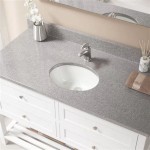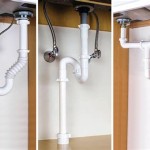How Much Would It Cost To Redo A Small Bathroom?
Remodeling a small bathroom is a common home improvement project that can significantly enhance a property's value and functionality. However, understanding the associated costs is crucial for budgeting purposes. The expense of redoing a small bathroom can vary widely depending on several factors, including the scope of the project, the quality of materials chosen, and the geographic location.
This article will explore the various cost components involved in a small bathroom remodel, providing a comprehensive overview to help homeowners estimate their potential expenses. It will cover factors such as labor costs, material costs for fixtures, flooring, and tiling, and potential unforeseen expenses that may arise during the renovation process. Understanding these elements will empower homeowners to approach their bathroom remodel with a realistic budget and minimize unexpected financial burdens.
It's important to distinguish between a cosmetic upgrade and a complete overhaul. A cosmetic upgrade might involve simply replacing fixtures or painting the walls, while a complete overhaul could involve moving plumbing, changing the layout, and installing all-new components. Naturally, the scope of the project will significantly impact the overall cost.
Labor Costs: A Significant Factor
One of the most significant expenses in a bathroom remodel is labor. This includes the cost of hiring contractors, plumbers, electricians, and other skilled professionals required to complete the project. Labor costs can represent a substantial portion of the overall budget, often ranging from 40% to 60% of the total expense. The actual cost of labor will depend on several factors, including the contractor's experience, the complexity of the work, and the prevailing labor rates in the area.
For example, a licensed plumber will charge a professional fee for their time and skill. The hourly rate will depend on their experience and location. These rates are high but are necessary to prevent water damage. Similarly, electricians need to be licensed to adhere to safety standards when wiring electrical systems. The costs for licensed professionals need to be carefully considered when planning a bathroom remodel.
General contractors typically manage the entire remodeling project, coordinating the various tradespeople and ensuring the work is completed according to the homeowner's specifications. They often charge a percentage of the total project cost, which can range from 10% to 20%. While hiring a general contractor adds to the overall expense, it can be beneficial for managing complex projects and ensuring quality workmanship.
The complexity of the project will also impact labor costs. Moving plumbing fixtures, such as the toilet or shower, requires more extensive work and will increase plumbing labor costs. Similarly, relocating electrical outlets or installing new wiring will add to the electrician's fees. Before beginning the project, a detailed plan must be drafted and approved by any needed professionals so that there are no surprise electrical or plumbing costs.
DIY (Do-It-Yourself) projects can reduce labor costs but may require specialized knowledge, skills, and tools. Attempting complex tasks without the necessary expertise can lead to mistakes and potentially costly repairs. Homeowners should carefully assess their capabilities and consider hiring professionals for tasks they are not comfortable with.
Material Costs: Balancing Quality and Budget
The cost of materials is another significant component of a bathroom remodel. This includes the cost of fixtures, flooring, tiling, paint, and other supplies. The choice of materials can significantly impact the aesthetic appeal and durability of the bathroom, as well as the overall cost of the project. Balancing quality with budget considerations is essential when selecting materials.
Fixtures such as toilets, sinks, showers, and bathtubs can vary widely in price. Basic models are generally the least expensive, while high-end models with advanced features can be significantly more costly. Consider the style and material of these items as these will greatly influence the overall cost. For example, a steel bathtub is usually cheaper than a porcelain tub.
Flooring options include tile, vinyl, and laminate. Tile is a popular choice due to its durability and water resistance, but the cost can vary depending on the type of tile chosen. Ceramic and porcelain tiles are generally more affordable than natural stone tiles, such as marble or granite. Vinyl flooring is a cost-effective alternative that is also water-resistant and easy to install. Laminate flooring is another option, but it is not as water-resistant as tile or vinyl and may not be suitable for bathrooms with high moisture levels.
Tiling is commonly used for shower walls and backsplashes. As with flooring, the cost of tiling can vary depending on the type of tile chosen. Intricate patterns and custom designs will also add to the tiling costs. Remember to factor in the cost of grout, sealant, and other tiling supplies.
The cost of paint and other decorative materials should also be considered. High-quality paint that is specifically designed for bathrooms is essential to resist moisture and prevent mold growth. Decorative elements, such as mirrors, lighting fixtures, and hardware, can add to the overall cost but can also enhance the aesthetic appeal of the bathroom.
To manage material costs, it is advisable to shop around, compare prices from different suppliers, and consider purchasing materials during sales or promotions. Homeowners should also prioritize quality and durability, as cheaper materials may not last as long and could require more frequent replacements.
Unforeseen Expenses: Preparing for the Unexpected
Even with careful planning and budgeting, unforeseen expenses can arise during a bathroom remodel. These unexpected costs can quickly derail a project and increase the overall budget. Preparing for these potential surprises is essential for a smooth and financially sound renovation experience.
One common unforeseen expense is the discovery of hidden plumbing or electrical problems. During demolition, contractors may uncover issues such as leaky pipes, damaged wiring, or outdated plumbing systems. Addressing these problems can add to the cost of the project, as it may require additional repairs or replacements. A complete rewiring is an example of an additional expense if old or damaged wiring is discovered. Likewise, if pipes are not up to code, they will need to be replaced.
Another potential surprise is the discovery of mold or water damage behind walls or under flooring. Mold remediation can be costly and time-consuming, as it requires specialized equipment and expertise. Water damage may necessitate repairs to the underlying structure, such as the subfloor or wall studs. Mold and water damage can also delay the project.
Changes to the original design or scope of the project can also lead to unforeseen expenses. If homeowners decide to add additional features or make significant alterations to the plan, this will likely increase the labor and material costs. Clear communication with the contractor and a detailed contract outlining the scope of the work can help minimize the risk of unexpected changes.
To mitigate the impact of unforeseen expenses, it is advisable to set aside a contingency fund of at least 10% to 15% of the total budget. This fund can be used to cover unexpected costs without derailing the project. It is also essential to work with experienced and reputable contractors who can identify potential problems early on and provide accurate cost estimates.
Permit costs should also be considered. Depending on the scope of the project and local building codes, permits may be required for plumbing, electrical, or structural work. These permits can add to the overall cost of the remodel and should be factored into the budget. Failure to obtain necessary permits can result in fines and delays.
Disposal fees are another potential cost to consider. Removing old fixtures, flooring, and other debris can generate a significant amount of waste, which may need to be disposed of at a landfill or recycling center. Disposal fees can vary depending on the amount of waste and the location of the disposal facility. Some contractors will include disposal fees, while others may require homeowners to handle the waste removal themselves.
Finally, consider the cost of alternative accommodations if the bathroom is unusable during the remodel. If the bathroom is the only one in the house, homeowners may need to stay in a hotel or rental property while the work is being completed. This can add to the overall cost of the project and should be factored into the budget.
In summary, the cost of redoing a small bathroom can vary widely depending on a number of factors. By carefully considering the labor costs, material costs, and potential unforeseen expenses, homeowners can develop a realistic budget and minimize the risk of financial surprises. Thorough planning, clear communication with contractors, and a contingency fund are essential for a successful and cost-effective bathroom remodel.

Understanding Small Bathroom Remodel Costs And How To Save

Small Bathroom Remodel 2024 Cost Guide Modernize

How Much For A Small Bathroom Renovation

Small Bathroom Remodel 2024 Cost Guide Modernize

Bathroom Renovation Cost How Much To Budget For A Remodel

Bathroom Remodeling Costs 2024 Sweeten

How Much Should I Budget For A Small Bathroom Renovation Interior Times

2024 Small Bathroom Remodel Cost Guide

How Much Does A Bathroom Remodel Cost 2024 Data Angi

Bathroom Remodel On A Budget Simple Made Pretty 2024
Related Posts







